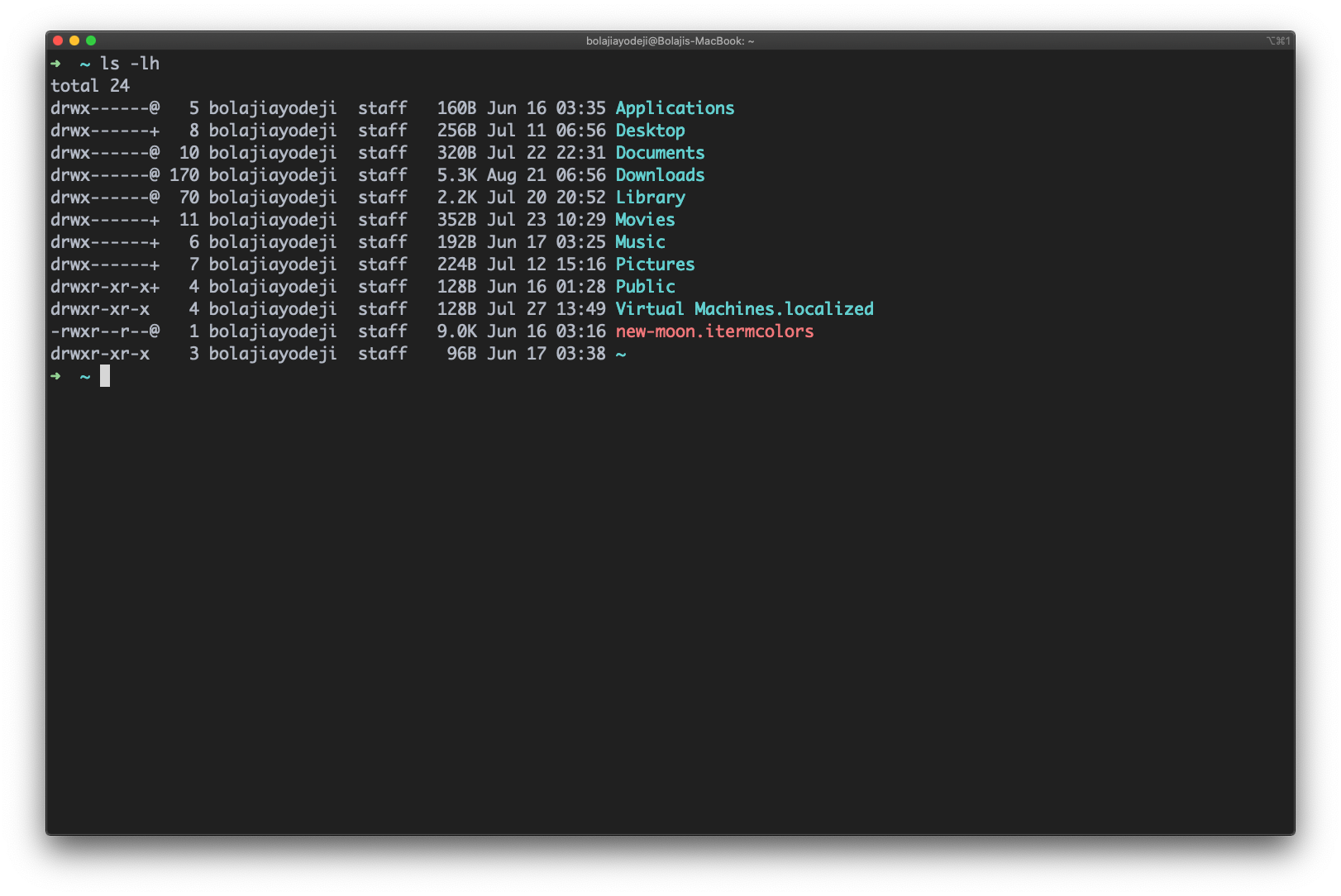
The BLOCKS computed counts each hard link separately this is arguably a deficiency. The block size currently defaults to 1024 bytes, but this can be overridden (note Block size::). For each directory that is listed, preface the files with a line ‘total BLOCKS’, where BLOCKS is the total disk allocation for all files in that directory. Print question marks for information that cannot be determined. ‘-l’ or ‘–format=long’ or ‘–format=verbose’: In addition to the name of each file, print the file type, file mode bits, number of hard links, owner name, group name, size, and timestamp ( note Formatting file timestamps::), normally the modification time.The ‘–all’ (‘-a’) option overrides this option. ‘-A’ or ‘–almost-all’: In directories, do not ignore all file names that start with ‘.’ ignore only ‘.’ and ‘.’.‘-a’ or ‘–all’: In directories, do not ignore file names that start with ‘.’.The following command options can be used: It shows the list in “long format” which includes the permissions, owner, group, size, last-modified date, number of hard links and the filename described. The “ls” command option “-a” will show all files and folders, including hidden ones. The division of options into the subsections is not absolute, since some options affect more than one aspect of ‘ls’’s operation. They are described in the subsections below within each section, options are listed alphabetically (ignoring case). If no non-option argument is specified, ‘ls’ operates on the current directory, acting as if it had been invoked with a single argument of ‘.’.īy default, the output is sorted alphabetically, according to the locale settings in effect.(1) If standard output is a terminal, the output is in columns (sorted vertically) and control characters are output as question marks otherwise, the output is listed one per line and control characters are output as-is.īecause ‘ls’ is such a fundamental program, it has accumulated many options over the years.

For other non-option arguments, by default ‘ls’ lists just the file name. For non-option command-line arguments that are directories, by default ‘ls’ lists the contents of directories, not recursively, and omitting files with names beginning with ‘.’. Options and file arguments can be intermixed arbitrarily, as usual. Make use of the feedback form below to share any thoughts with us.The ‘ls’ program lists information about files (of any type, including directories).
#Linux ls hidden files how to
That’s it for now! In this tutorial, we described how to easily and effectively hide files and directories and view hidden files/directories in Linux from the terminal and GUI file manager. Now you can hide the file by renaming it with a.
#Linux ls hidden files password
Compress Files with Password in Linuxįrom now on, each time anyone wants to open the file, they’ll be asked to provide the password created above. Once you have set the password, click on Create. Select the file or directory and right click on it, then choose Compress from the menu list, after seeing the compression preferences interface, click on “ Other options” to get the password option as shown in the screenshot below.


In order to add a little security to your hidden files, you can compress them with a password and then hide them from a GUI file manager as follows. View Hidden File Using File Manager How to Compress Files and Directories with a Password

$ ls -aįrom a GUI file manager, go to View and check the option Show Hidden Files to view hidden files or directories. To view hidden files, run the ls command with the -a flag which enables viewing of all files in a directory or -al flag for long listing. How to View Hide Files and Directories in Linux Once you have renamed it, the file will still be seen, move out of the directory and open it again, it will be hidden thereafter.


 0 kommentar(er)
0 kommentar(er)
